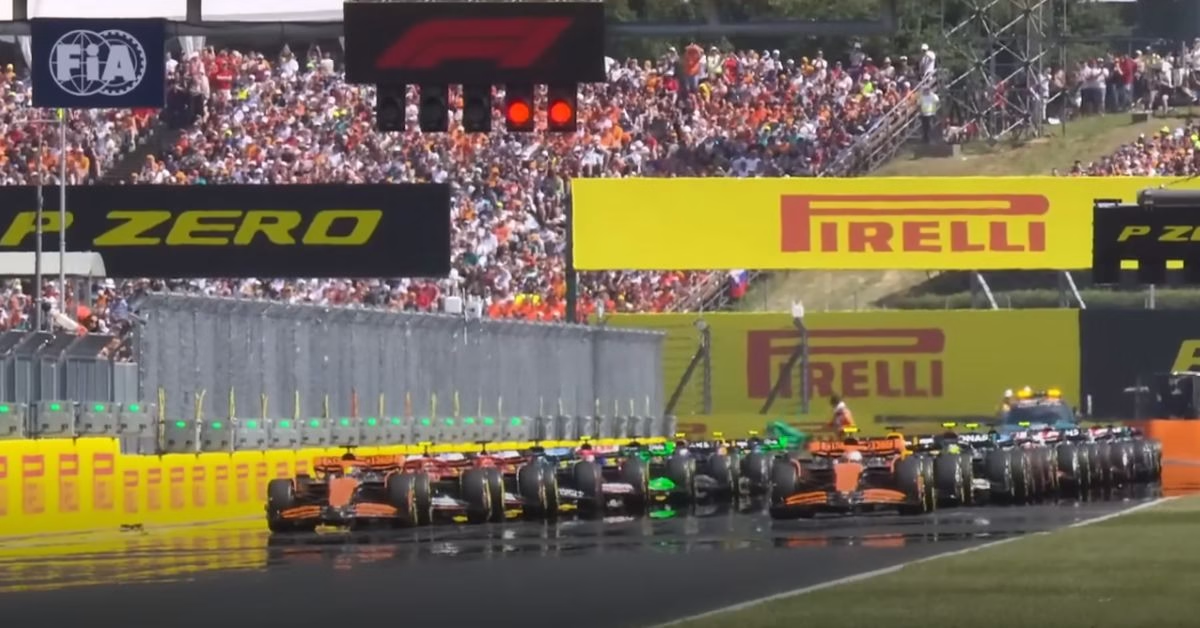The Hungaroring may be narrow and twisty, but don’t let that fool you. Some of Formula 1’s most unforgettable moments have happened here. From famous Hungarian GP overtakes and surprise rain chaos to breakout performances that shaped careers, the Hungarian Grand Prix has been anything but predictable.
As one of the most technically demanding tracks on the calendar, it forces precision, patience, and perfect strategy. Let’s take a look back at the moments that turned the Hungarian GP into a fan favorite and a true staple of F1 history at the Hungaroring.
1986: Nelson Piquet’s Wild Pass on Ayrton Senna
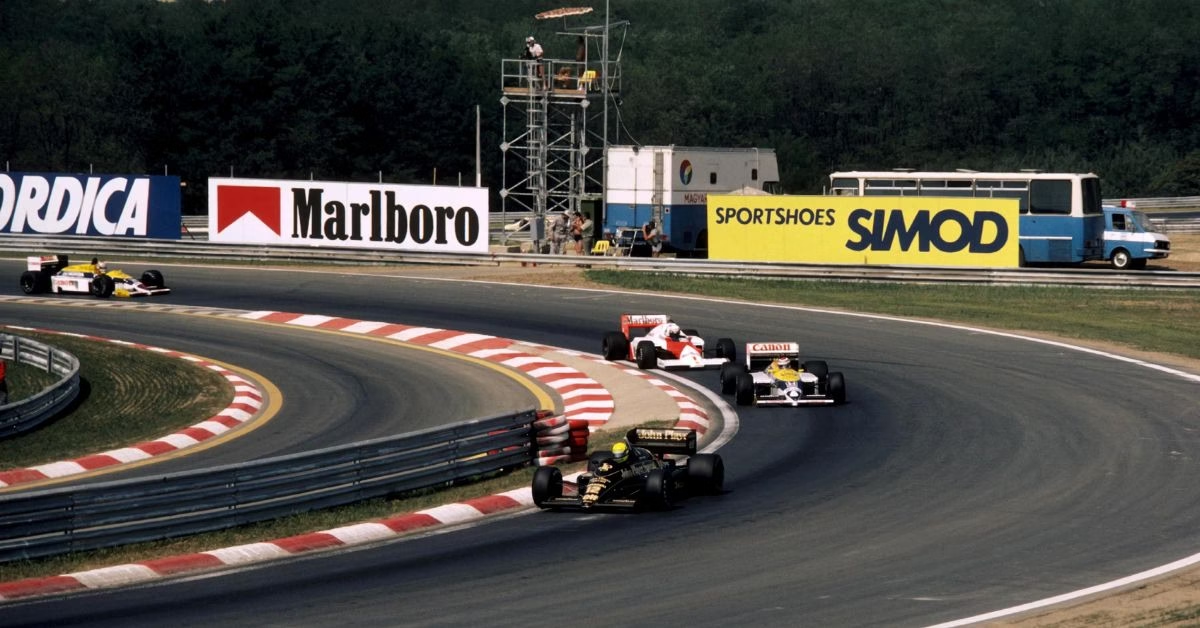
The inaugural Hungarian Grand Prix in 1986 gave us a moment for the ages. Nelson Piquet’s audacious overtake on Ayrton Senna wasn’t just a race highlight; it became one of Formula 1’s most iconic passes. Driving his Williams-Honda, Piquet had already attempted to pass Senna once at Turn 1, only to lock up and slide wide.
The next lap, he tried again, this time going around the outside while balancing the car in a full opposite-lock drift. It was an outrageous display of car control, made even more dramatic by the track’s dusty surface and lack of overtaking opportunities.
Piquet went on to win, but that move overshadowed everything else. The fact that it came against fellow Brazilian Senna only added to the drama. Formula 1 had arrived in Hungary in style.
1997: Damon Hill Nearly Wins for Arrows
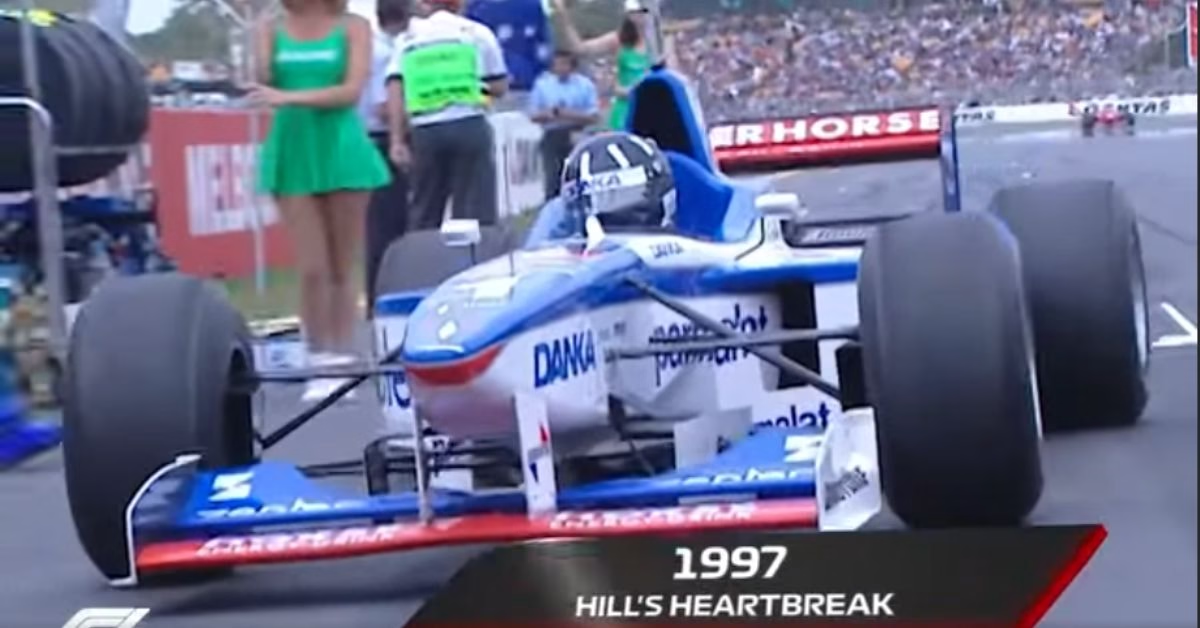
What could have been one of Formula 1’s biggest underdog victories nearly came true at the 1997 Hungarian Grand Prix. Driving for the underfunded Arrows team, Damon Hill stunned the paddock by leading most of the race. Thanks to Bridgestone’s superior tires and a brilliant setup, Hill pulled away from a grid packed with faster cars.
He built a comfortable lead and looked set to claim Arrows’ first-ever win. But with just minutes to go, a hydraulic failure slowed him dramatically. Jacques Villeneuve overtook him on the final lap, snatching victory. Hill still finished second and was named Driver of the Day.
His near-miracle performance reminded fans why he was a world champion. Despite the heartbreak, that afternoon in Budapest became one of Hill’s most respected drives. This remains one of the best drives in Hungarian Grand Prix history.
2006: Jenson Button’s First Win in the Wet
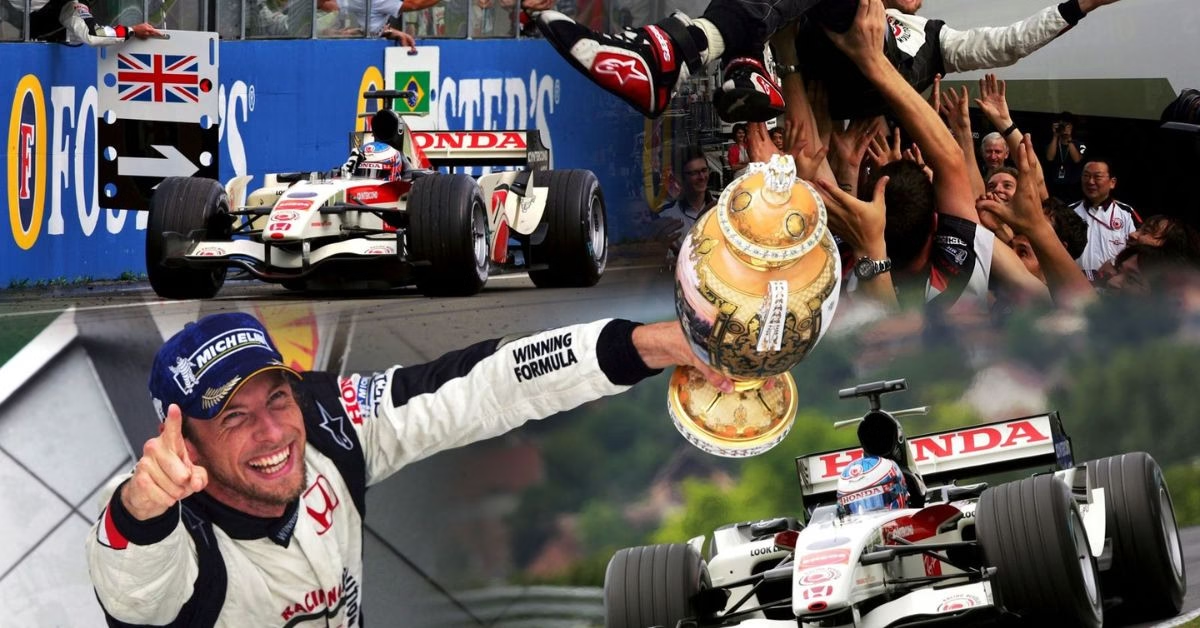
The 2006 Hungarian Grand Prix delivered chaos, drama, and a breakthrough moment for Jenson Button. Starting 14th on the grid, Button mastered the changing weather conditions to claim his first Formula 1 victory. The race began wet and stayed unpredictable throughout, with multiple lead changes, safety cars, and retirements.
Button made smart tire choices, stayed composed in traffic, and capitalized on mistakes from others. Key rivals like Fernando Alonso and Michael Schumacher failed to finish, while Button surged through the field with confidence.
It was also Honda’s first win as a constructor since the 1960s. His performance showed maturity and racecraft beyond what many expected at the time. This drive not only kickstarted Button’s winning career, it became one of the most memorable wet-weather victories in recent F1 history. It also marked one of the most dramatic wet races at the Hungaroring, showcasing Button’s skill in treacherous conditions.
2008: Heikki Kovalainen’s Surprise Victory
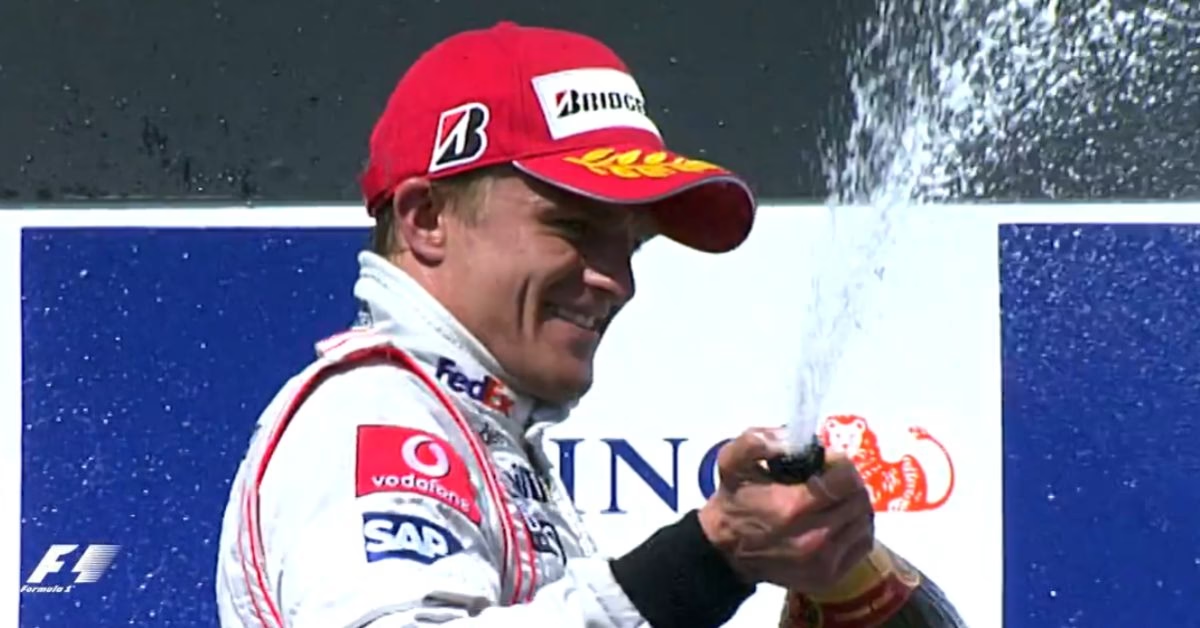
The 2008 Hungarian Grand Prix produced one of the most unexpected winners of the modern era. Heikki Kovalainen claimed his first and only Formula 1 victory after a series of dramatic twists late in the race. For most of the afternoon, Felipe Massa dominated the field, leading comfortably in his Ferrari.
But with just three laps to go, Massa’s engine failed, handing the lead to Kovalainen. It was a gift for the Finnish driver, who had been running a quiet race in third. Lewis Hamilton also suffered a puncture earlier, removing another key contender.
While Kovalainen’s win lacked wheel-to-wheel heroics, it highlighted just how cruel and unpredictable Formula 1 can be. For McLaren, it was a much-needed result. For Kovalainen, it became the defining moment of his F1 career.
2007–2020: Lewis Hamilton’s Hungaroring Dominance

Few drivers have mastered a single circuit like Lewis Hamilton has at the Hungaroring. From his first win here in 2007 with McLaren to his record-breaking triumphs with Mercedes, Hamilton has claimed an unmatched nine Hungarian GP victories.
His consistency at the technical, low-grip Budapest circuit became a benchmark of excellence. Whether in dry conditions or tricky wet sessions, Hamilton’s precision, tire management, and race IQ always stood out. His 2013 victory with Mercedes was an early sign of what the team would become.
In 2019, he chased down Max Verstappen after a bold two-stop strategy, pulling off a late-race pass in one of his most strategic wins. Hamilton’s dominance in Hungary isn’t just statistical—it represents his evolution from rising star to F1’s most successful driver.
2021: Esteban Ocon Hungarian GP Win for Alpine
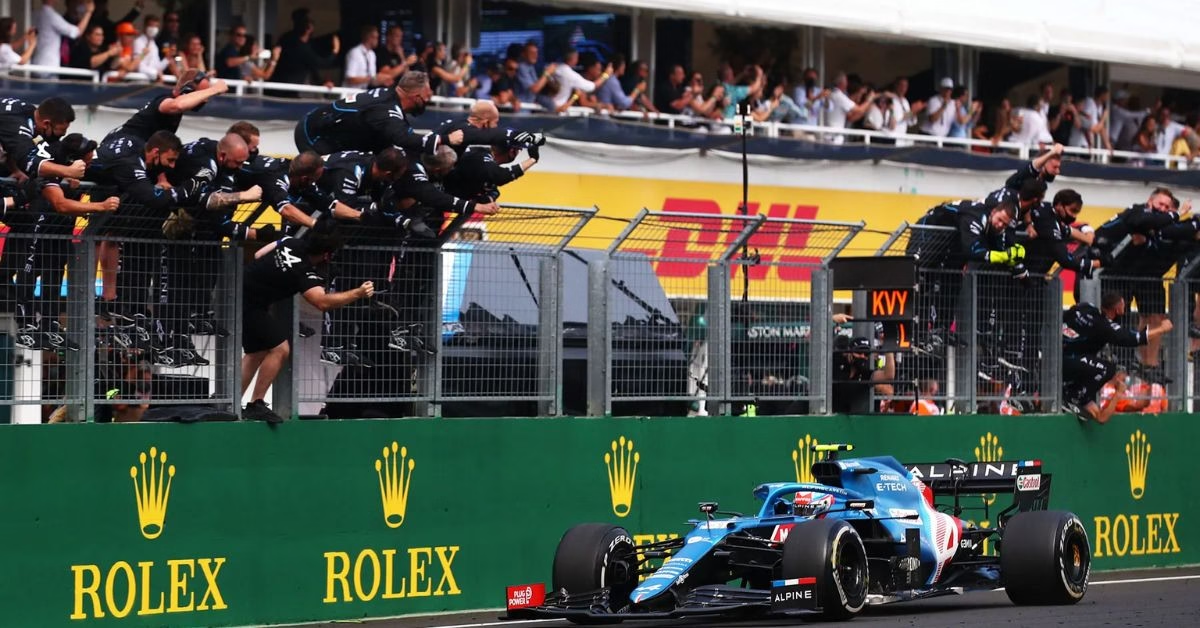
The 2021 Hungarian Grand Prix was pure chaos from the start in one of the wildest Hungarian GP results ever recorded. Rain on Lap 1 triggered a massive crash caused by Valtteri Bottas and Lance Stroll, wiping out several frontrunners and reshuffling the grid. Esteban Ocon emerged from the mess in the lead and never looked back.
Driving flawlessly for Alpine, Ocon resisted pressure from Sebastian Vettel for nearly the entire race. Behind them, the real heroics came from Fernando Alonso, who defended against a charging Lewis Hamilton for 10 laps, buying Ocon the time he needed.
When the checkered flag fell, Ocon secured his first career victory and Alpine’s first win under its new name. It was a shock result that highlighted the unpredictability of the Hungaroring and the value of teamwork, strategy, and calm under pressure.
2022: George Russell’s First Pole Position
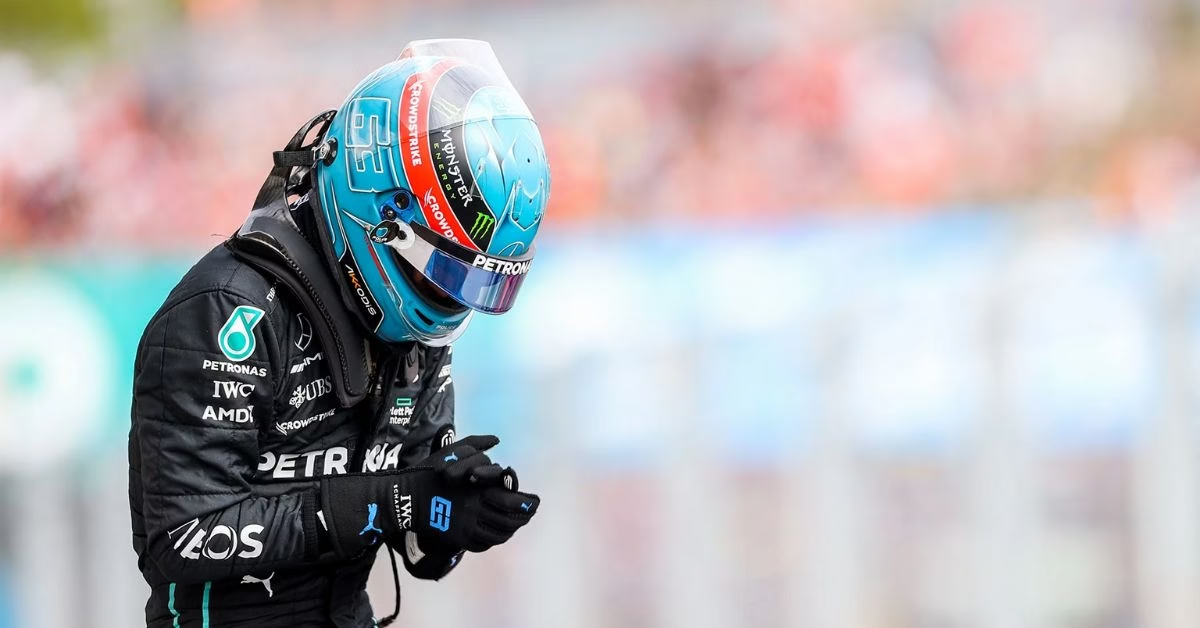
The 2022 Hungarian Grand Prix weekend delivered a breakthrough moment for George Russell. On Saturday, in a session full of changing conditions and rising tension, the young Brit shocked the paddock by snatching pole position for Mercedes.
It was the first pole of his Formula 1 career and a sign that Mercedes was finally starting to regain competitiveness after a tough season. Russell’s lap was clean, aggressive, and inch-perfect on a track where qualifying matters more than most.
While he couldn’t convert it into a win on Sunday, the performance was a personal milestone. It confirmed Russell’s status as a future race winner and a key part of Mercedes’ long-term plan. That pole position at the Hungaroring was a quiet but powerful statement of intent.
What makes the Hungarian GP so unique?
The Hungarian Grand Prix stands out for its tight, twisty layout that rewards precision and strategy over raw power. Held at the Hungaroring near Budapest, the track often produces unpredictable results due to limited overtaking zones and hot summer conditions. It’s one of the oldest races on the calendar outside Western Europe and has developed a reputation as a driver’s circuit, often likened to Monaco without the walls. This is why the Hungarian GP is often home to surprise winners and standout moments.
Has the Hungarian GP ever had a surprise winner?
Yes, the Hungarian Grand Prix has produced several shock winners. Notably, Jenson Button won his first race in 2006 from 14th on the grid in wet conditions. In 2021, Esteban Ocon claimed a surprise victory after a first-lap crash eliminated multiple frontrunners. Damon Hill nearly won in 1997 for Arrows, missing out on victory by just one lap. The track’s tight layout and frequent strategy twists often create unexpected results.
Why is overtaking difficult at the Hungarian GP?
Overtaking is tough at the Hungarian Grand Prix because of the Hungaroring’s narrow layout, short straights, and closely packed corners. The most viable passing zone is Turn 1 after the main straight, but elsewhere, dirty air and limited braking zones make moves risky. As a result, track position is crucial, and qualifying performance often determines race outcomes. Teams tend to rely heavily on pit strategy and undercuts to gain places.
Which drivers have won the most at the Hungarian GP?
Lewis Hamilton holds the record for the most Hungarian Grand Prix wins with nine victories between 2007 and 2020. His success at the Hungaroring is unmatched, thanks to his strong qualifying pace and racecraft in tight conditions. Other notable multiple winners include Michael Schumacher with four wins and Ayrton Senna with three. Hamilton’s dominance has made this one of his signature circuits throughout his Formula 1 career.
What are the most iconic corners at the Hungaroring?
The Hungaroring features several standout corners. Turn 1 is the main overtaking spot after the long main straight. Turn 4 is a high-speed uphill left-hander that tests car balance and driver commitment. The Turn 6–7 chicane punishes mistakes with aggressive curbs. The final two corners, especially Turn 14, are crucial for a clean exit onto the straight and setting up passes into Turn 1. Precision matters across the entire lap.
Can you visit or drive on the Hungaroring outside of F1?
Yes, the Hungaroring is open to the public for various activities outside the Formula 1 weekend. Visitors can book track days, driving experiences, or guided tours. The circuit also hosts local racing events, testing sessions, and amateur motorsport competitions. If you want to drive the track yourself, options include supercar rentals, hot laps, or bringing your own car for an open track session, depending on the schedule and availability.

